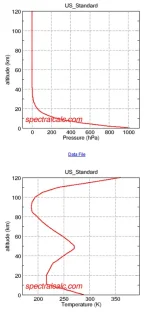Do you mean the picket fence idea?
I am a bit weak on the spectral lines, but if I recall correctly, other lines between do not matter. I think of it like my first career. Telecommunications and the 3 dB width. I think of it as rhe effect being wider rhan rhe discrete value.
My understanding is that a similar idea applies to CO2, not just water vapor.
Water vapor lines are smeared near the ground, but they still leave lots of tiny gaps, especially around 8 to 14 microns, the part of the infrared spectrum where Earth gives off the most heat. And you can see indications of this in your own graphs:
What you're posting here is straight-up climate science denialism:
1. NASA's rebuttal:
View attachment 67577560
"All atmospheric gases have a unique pattern of energy absorption: they absorb some wavelengths of energy but are transparent to others. The absorption patterns of water vapor (blue peaks) and carbon dioxide (pink peaks) overlap in some wavelengths. Carbon dioxide is not as strong a greenhouse gas as water vapor, but it absorbs energy in wavelengths (12-15 micrometers) that water vapor does not, partially closing the “window” through which heat radiated by the surface would normally...
CO2's lines also spread, and those "wings" slide into the gaps and grab more of the escaping heat.
As you climb higher, water vapor fades to almost nothing while CO2 stays evenly mixed, so CO2's wings become the main barrier to outgoing heat in the thin, dry upper air.
That's why extra CO2 keeps slowing Earth's heat loss, and therefore warming the surface, even though water vapor is thick near the ground.
When we add more CO2 the wings get deeper, soaking up still more energy across the width they cover.
More CO2 also pushes the average escape height higher, and because that higher layer is colder, it radiates less efficiently.
CO2 acts like a blanket that keeps adding thicker layers to itself.
That is my understanding. Does it match yours?
And just to be clear: do you agree water vapor isn't a solid, impenetrable shield?
And just to be clear: do you agree that heat still works its way upward, and that high up it is mainly CO2, not water vapor, blocking the last of the heat?




